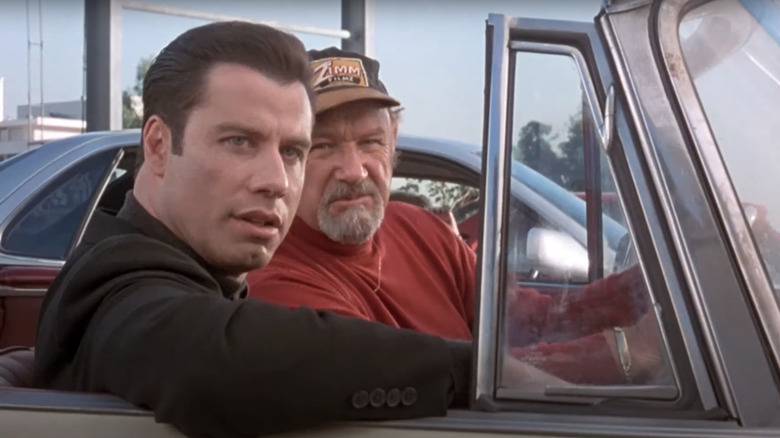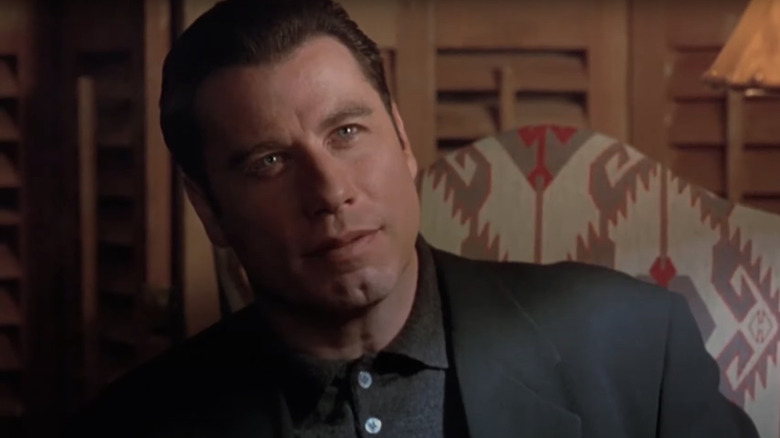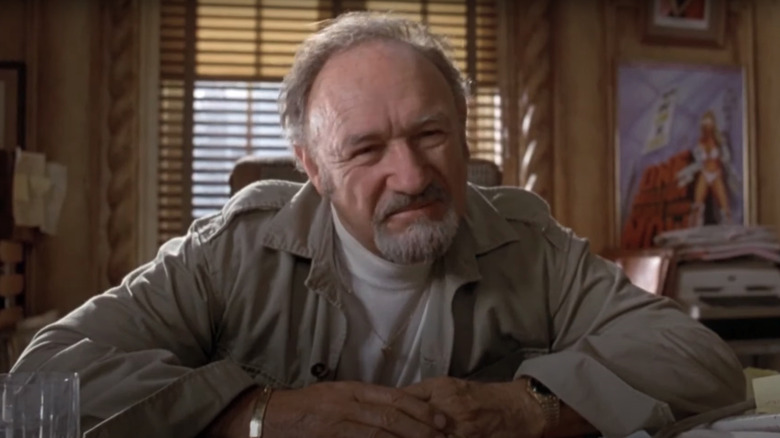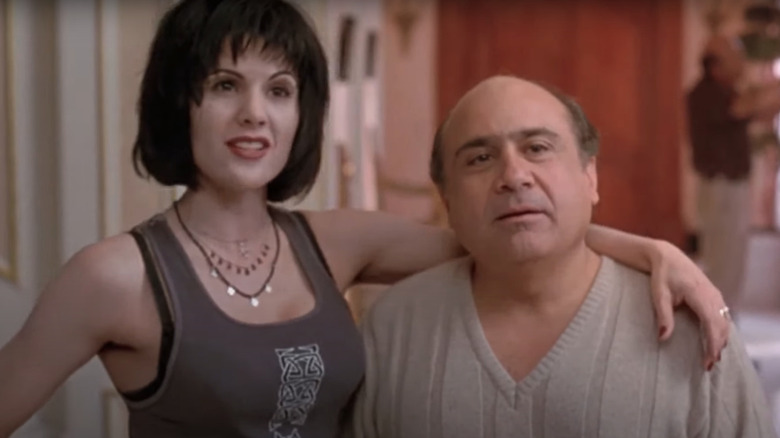John Travolta Fought To Keep Get Shorty's Dialogue From Sounding Too Much Like A Screenplay
If you queued up "Get Shorty" without watching the trailer — maybe the description won you over, or the movie came highly recommended — you're in for a rare, surprising treat. Save for a few dated comments, the film's dialogue is so hilariously indulgent that the plot, which is still entertaining, may have been an afterthought. (I say this with nothing but love and appreciation!) After all, few movies have their mobsters look John Travolta square in the eye while musing like:
"Chilly [weather] outside. Chili [the thug] inside. It's a regular f***in' chili-fest. Hey, waiter — give Mr. Chili Pepper a big f***in' bowl of chili!"
The conversations in "Get Shorty" are unlike the polished dialogue found in most Hollywood movies. Instead, the film's conversations feel written by a team of film noir fans, reminiscing about the genre's snappy wit. It's as if screenwriter Scott Frank dreamt up hilarious lines, questioning if the dialogue is too ridiculous, and ultimately left the wildest ideas in — because, why not?
In reality, many of the film's best lines came from Elmore Leonard's novel of the same name. Still, Hollywood didn't always appreciate the book's genius. Frank tried to polish Leonard's prose while adapting the novel. However, he removed some of the story's heart in the process. If it weren't for John Travolta — and, indirectly, Quentin Tarantino — the underwhelming dialogue would've likely stayed in the movie; "Get Shorty" would have failed to measure up.
The original script was too bland for 'Mr. Chilli Pepper'
When Travolta heard about "Get Shorty," he initially wasn't interested in the project. The original script included Frank's modified dialogue, so the movie's charm was missing. Still, Tarantino strongly encouraged Travolta to get on board. Although the actor relented, Travolta — who was highly selective when choosing his roles — had a key stipulation: The film needed to restore Leonard's dialogue.
Without a copy of the original screenplay, it's uncertain how different "Get Shorty" could've been. In 2004, Leonard told The Guardian that Frank was an ideal collaborator because he knew it was more interesting to "get the characters knocking heads and see how they turn out" — a technique that helped make "Get Shorty" entertaining. Still, Travolta shared an approximation of one of Frank's changes with Time Magazine. Early in the film, Chili discovers that a gangster has taken his jacket from a restaurant coat check. This moment sets up the movie's main rivalry. But in Frank's version of the script, Chili doesn't seem too invested in the jacket, stating:
"Where's my coat? You better find it. It cost $400."
Leonard's version of the line was more detailed, which made it feel like the mobster really cared about the coat, stating:
"You see a black leather jacket, fingertip length, has lapels like a suitcoat? You don't, you owe me three seventy-nine ... You get the coat back or you give me the three seventy-nine my wife paid for it at Alexander's."
Get Shorty ran into talent challenges, too
Travolta's suggestion undoubtedly improved the film. But the fact that he negotiated these terms before joining the film proves that Oscar Wilde had a point: Life frequently imitates art. "Get Shorty" pokes fun at the fact that a mobster is at home in Hollywood — thanks to the film industry's constant deal-making. Director Barry Sonnenfeld would experience the frustrating process of negotiating with talents to create his film.
It'd be frustrating enough to commission a script rewrite to land an actor. But things were (likely) more complicated because the actor wasn't Sonnenfeld's top choice to play Chili Palmer (via Times). Still, the director's headaches kept coming. Gene Hackman threatened to quit mid-production because he didn't want to shoot at night, and later admitted that he "could've done so much better" if he realized the film would be so good.
Ultimately, it's not a total surprise that "Get Shorty" depicted Hollywood relatively accurately. Leonard was a prolific novelist who often had his works adapted for the big screen (most famously leading to Tarantino's "Jackie Brown"). The author had plenty of experience with the film industry. As the story goes, the original "Get Shorty" novel came from Leonard's frustration surrounding a canceled film adaptation of "La Brava." (Sorry, Oscar Wilde, art imitates life, too!)
Finding beauty in the chaos
Hollywood may have plagued Leonard and Sonnenfeld with headaches, but if there's one thing that "Get Shorty" makes clear, both on-screen and behind the scenes, it's that strained negotiations can still lead to a great movie. Yes, Chili loved "A Touch of Evil." But he also realized that studio pressure forced Orson Welles to do his "best work" — even if the director wasn't particularly interested in the film. Likewise, even if Travolta, Hackman, and Sonnenfeld had their share of frustrations, "Get Shorty" turned out to be an impressive movie.
The film's dialogue is in a league of its own: It's endearing to watch Chili wander around Hollywood, mesmerized by the film industry's spell despite his tough exterior. Plus, you have to appreciate how mobsters fit into Hollywood, even if things don't work the other way around. Travolta and Sonnenfeld had to go the extra mile to make "Get Shorty," but it was worth it.



